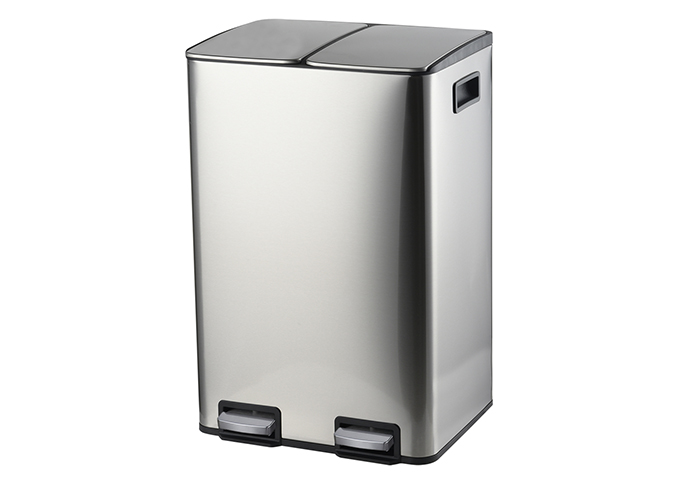What is a compartment trash can?
In the quest for more efficient waste management and eco-friendly practices, the Compartment Trash Can emerges as a beacon of innovation, offering a solution to the complexities of recycling and waste sorting. This comprehensive exploration delves into the intricate world of the Compartment Trash Can, unraveling its definition, elucidating its myriad advantages, exploring the diverse types available, and shedding light on its multifaceted applications.
What is a Compartment Trash Can?
A compartment trash can, also known as a multi-compartment or dual-compartment trash can, is a waste disposal container designed with multiple compartments or sections. Unlike traditional single-compartment bins, these specialized containers provide users with the ability to segregate different types of waste within the same unit. This innovation is particularly aimed at encouraging and simplifying recycling efforts, making it convenient for individuals to separate recyclables from non-recyclables without the need for separate containers.

Advantages of Compartment Trash Cans:
-
Recycling Made Easy: The primary advantage of compartment trash cans lies in their ability to streamline the recycling process. By offering designated compartments for recyclables, non-recyclables, and sometimes even organic waste, these bins make it easy for users to segregate their waste at the source, promoting environmentally conscious practices.
-
Reduced Environmental Impact: Compartment trash cans contribute to reducing the environmental impact of waste disposal. By facilitating recycling, these bins aid in diverting recyclable materials away from landfills, mitigating pollution and conserving valuable resources.
-
Organized Waste Sorting: With clearly defined compartments, these trash cans promote organized waste sorting. Users can easily distinguish between different types of waste, preventing cross-contamination and ensuring that recyclables are kept separate from general waste.
-
Space Efficiency: Despite their multiple compartments, many compartment trash cans are designed to be space-efficient. They often feature a compact and sleek design, making them suitable for various settings, including kitchens, offices, and public spaces.
-
Encourages Sustainable Practices: Compartment trash cans play a pivotal role in encouraging sustainable waste management practices. By making recycling more accessible and convenient, these bins motivate individuals and communities to adopt a more responsible approach to waste disposal.
Types of Compartment Trash Cans:
-
Dual-Compartment Bins: These are the most common type, featuring two separate compartments one for recyclables and one for non-recyclables. This simple design is effective for basic waste sorting in households and offices.
-
Triple-Compartment Bins: Triple-compartment trash cans add an additional section for organic waste. This design is especially beneficial for those practicing composting, allowing them to segregate kitchen scraps and organic materials from recyclables and non-recyclables.
-
Stacked Compartment Bins: Some innovative designs feature stacked compartments, allowing users to vertically stack different sections. This can be advantageous for optimizing space while still providing multiple sorting options.
Applications of Compartment Trash Cans:
-
Home Recycling Centers: Compartment trash cans find a natural home in residential settings, functioning as home recycling centers. They make it convenient for families to engage in recycling without the need for separate bins for each waste category.
-
Office Spaces: In office environments, where paper waste, recyclables, and general waste are common, compartment trash cans provide an efficient solution for organized waste disposal. They support eco-friendly initiatives and contribute to a greener workplace.
-
Public Spaces: Compartment trash cans are increasingly being deployed in public spaces such as parks, shopping malls, and educational institutions. These bins make it easier for the general public to participate in recycling efforts while keeping public areas clean and organized.
-
Commercial and Industrial Settings: Larger compartment trash cans or specialized bins are used in commercial and industrial settings where waste streams can be more diverse. These bins are integral to waste management practices in manufacturing plants, warehouses, and other large facilities.
Conclusion:
The compartment trash can emerges as a beacon of sustainability, revolutionizing the way we approach waste disposal. With its ability to simplify recycling efforts, reduce environmental impact, and encourage organized waste sorting, this innovative waste management solution represents a crucial step towards a more eco-conscious and responsible future. As we navigate the complexities of waste management, the compartment trash can stands as a symbol of progress, transforming the act of disposing of waste into a conscientious and purposeful endeavor.
